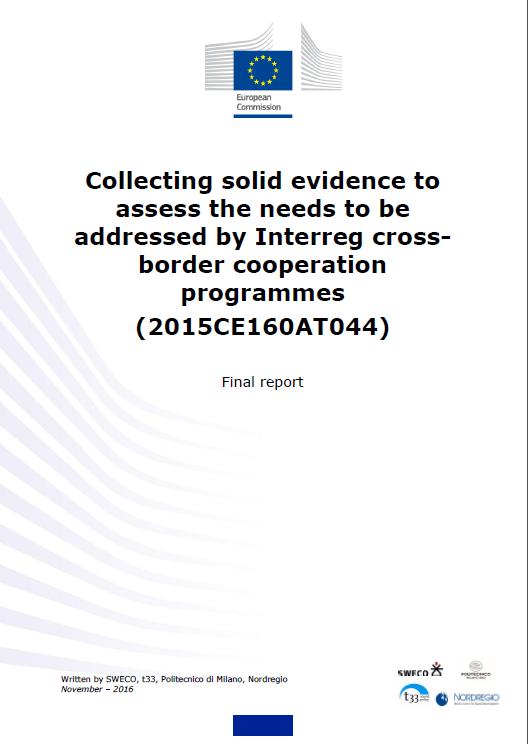
Studies
Date: 21 nov 2016
Theme: Urban development, Cooperation between regions and countries, Territorial cohesion
Languages: en
This study identifies the main obstacles and potential (needs) for development and growth in cross-border regions. The most significant needs, which are suitable and affordable for Interreg programmes, are mapped through a set of indicators built-up at a territorial NUTS3 level. The database reports 25 indicators, which allow for comparisons between the 62 border regions, of which 45 are land and 17 are maritime border regions. The obstacles covered by the study are socio-economic, physical, cultural and related to normative and institutional barriers. The potential for growth is linked to competitiveness, market integration, the presence of social and human capital, the delivery of public-services in urban areas and the management of natural resources. The most relevant needs, i.e. those with a high impact on social, economic and territorial cohesion, should be given priority at territorial level by public interventions. Furthermore, the study recommends that new cross-border indicators be developed, that are not available at the moment but would be useful to quantify the needs in a mid-term outline.
Annexes
More information
Other files related to the study
The files related to the study can be downloaded below. They are grouped along the following themes:
- Borders (.7z - 40MB)
- Maps (.7z - 19MB)
- Population (.7z - 67MB)
- Obstacles (.7z - 182MB)
- Potentials (.7z - 375MB)
Please note that each folder contains different file formats which have different functions. You will find the following file formats:
- Png and pdf: Map outputs in image format. These files are to consult and re-use the thematic maps. For Maps illustrating borders that have terrestrial and maritime sections share the same legend, which is provided as a separate image, or as a separate page in the PDF file. The filenames provide an adequate link between the maps themselves and the legend.
- GIS geometry datasets: The geometry of the borders and the border areas (in "shapefile" format). The shapefiles with the borders and the border areas' geometry are useful if you wish to create alternative maps related to these borders of areas, or if you wish to adapt some of the existing maps. GIS software is needed to use them.
- Map documents (in ESRI MXD format): The mxd files can be used to adapt the existing maps, but are only useful in combination with the shapefiles. Mxd files can only be used by ESRI ArcGIS software.
- Map documents in QGIS format (qgs): The QGIS project file contains links to the shapefiles provided in the folders. This project file is useful to explore the geodata, but can only be used by QGIS software (free and open source GIS software).
The data is freely accessible and usable provided the source of the data is adequately indicated.
Should you change or adapt the maps and publish modified maps, make sure you indicate that the new versions have been modified by you.
